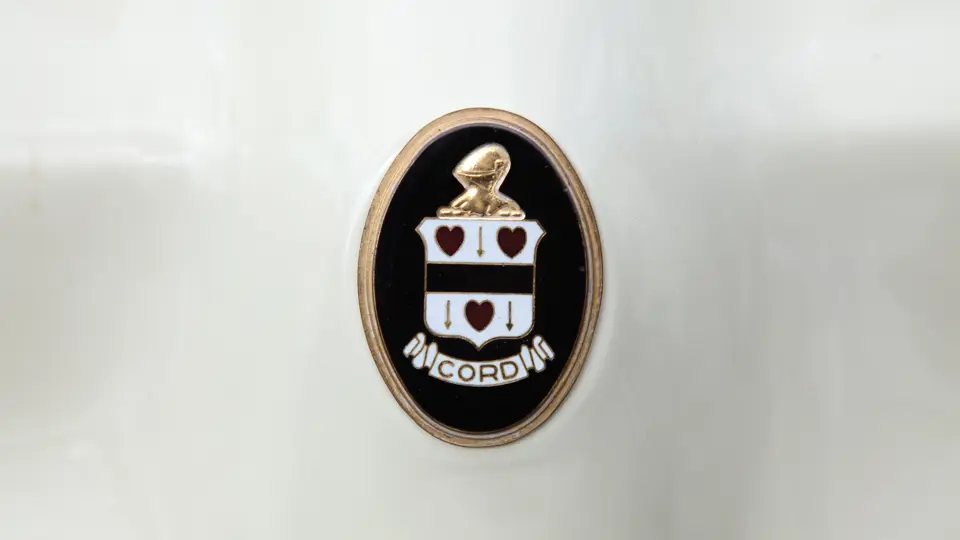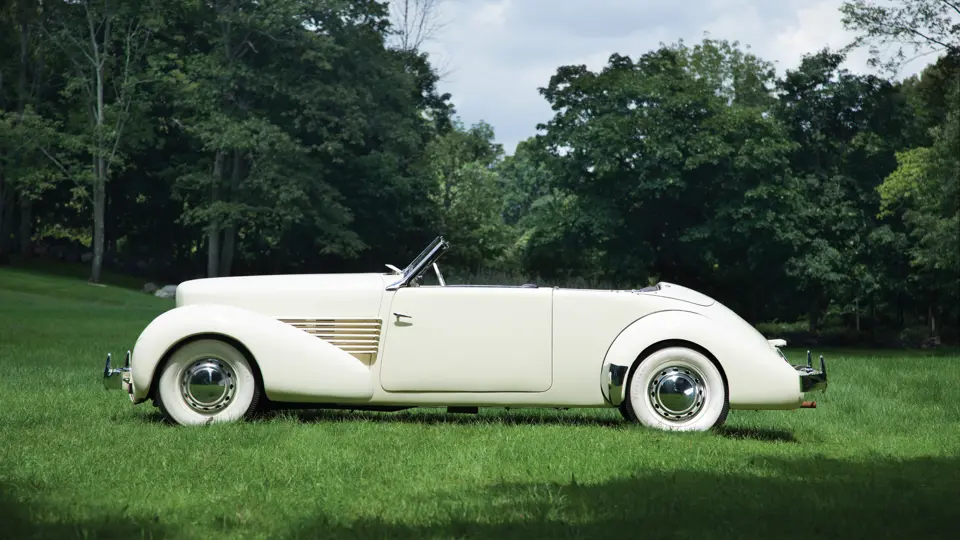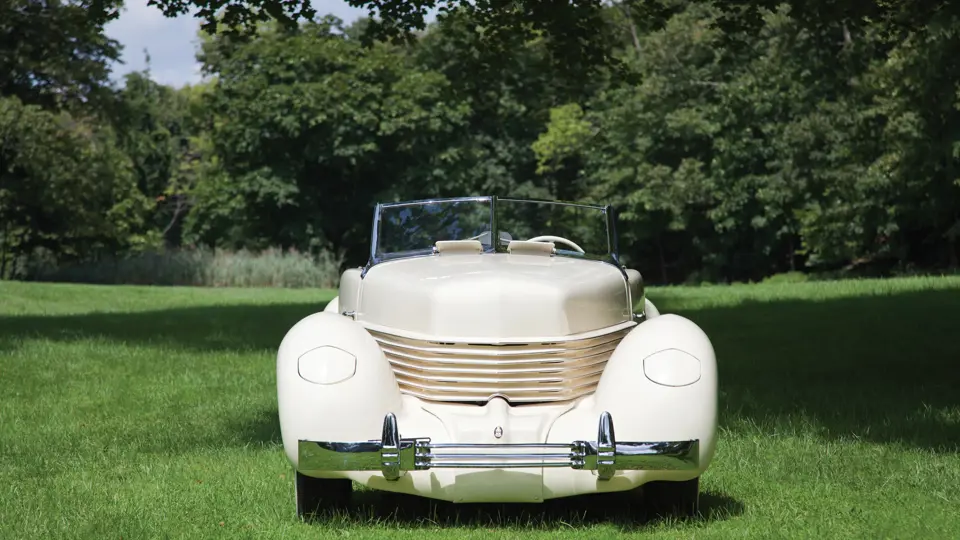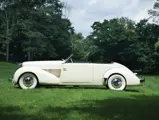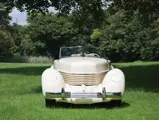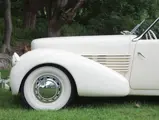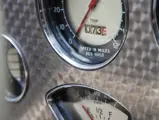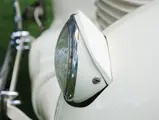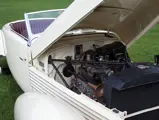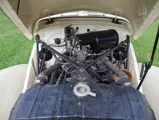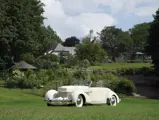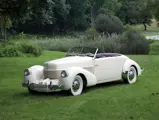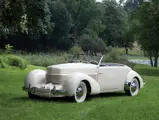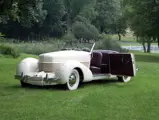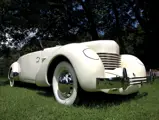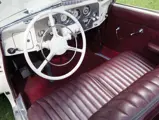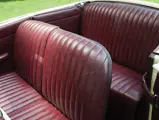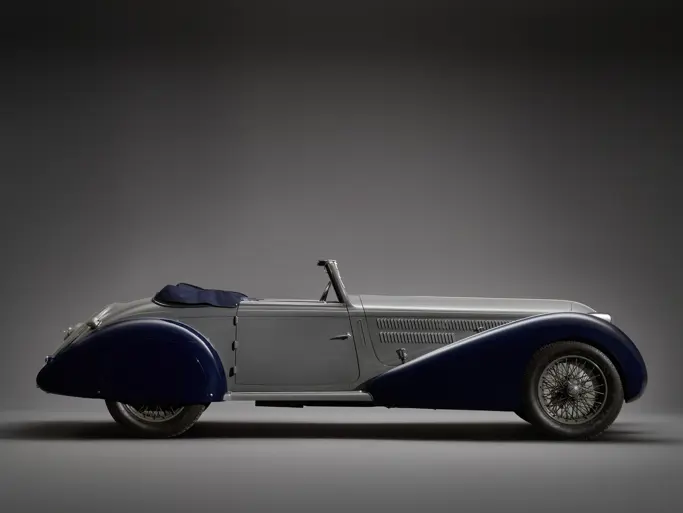Model 812. 125 bhp, 288.6 cu. in. L-head V-8 engine, four-speed pre-selector transmission, trailing arm independent front suspension, solid rear axle with semi-elliptic leaf springs, and four-wheel hydraulic drum brakes. Wheelbase: 125"
- Timeless Gordon Buehrig design
- Legendary performance
- CCCA Full Classic
Errett Lobban Cord was the consummate salesman. By the early 1920s he had become the top seller of Moon cars in Chicago and subsequently rescued the foundering Auburn Automobile Company. In 1926, having acquired Duesenberg as a luxury brand in the growing Auburn empire, he decided to launch a niche car he would name for himself.
Choosing front-wheel drive, he used an inline eight from Lycoming, another company he had bought. The Cord L-29, introduced in the summer of 1929, was long and low. A blue coupe with body designed by Alexis de Sakhnoffsky, the Russian count who had emigrated to the US by way of Switzerland, won the Monaco Concours d’Elegance in 1930. Four factory bodies were offered, and some were graced with custom coachwork, but sales were disappointing. After 5,000 cars were built, production was halted at the end of 1931. A planned L-30 successor never appeared.
Cord tried again with the 810 in 1935. Again with front-wheel drive, its engine was a V-8, also from Lycoming, but a four-speed electrically-shifted preselector transmission was used. The body, designed by Gordon Buehrig, was a thing of beauty. Its blunt louvered hood gave rise to the nickname “coffin nose,” always as a term of endearment. Its reception at the November 1935 New York Auto Show was enthusiastic, and orders poured in. Alas, production startup was slow, and by the time supply caught up with demand some customers had changed their minds.
There were four body styles, two of them sedans and two open cars, a two-passenger Convertible Coupe and five-passenger Convertible Phaeton Sedan. The Convertible Phaeton Sedan had a back seat for three, while the Convertible Coupe used this space to house the top when retracted. Pioneering features of the Phaeton included rear quarter windows that pivoted downward when lowered with a crank. Cords for 1937 were designated “812,” although there were few changes aside from an optional supercharger.
The Cord 812 was the last car to remain in production in the E.L. Cord empire. Cord sold his interests that August, and the new management immediately halted the lines. The tooling for Beuhrig’s beautiful bodies was later used by Hupp and Graham in an ultimately futile attempt to continue the car business themselves.
Restored in the late 1990s, this car is offered from a private collection and is painted correct Cigarette Cream with dark burgundy upholstery—a superb color combination. The convertible top is beige canvas. The car presents well with any cosmetic issues only visible on closer examination. As a Classic Car Club of America Full Classic, this car is eligible for all Club activities. The car’s chassis number would seem to indicate a supercharged Westchester Sedan. Additionally, Cord historian Josh Malks’ books on the subject indicated that engine “FB 2003” is in an unspecified, un-supercharged Phaeton. Malks details 810 and 812 Cord production at slightly more than 2,900 cars over an 18-month period. Of these, 612 were Convertible Phaetons. This car is certainly among the most attractive.




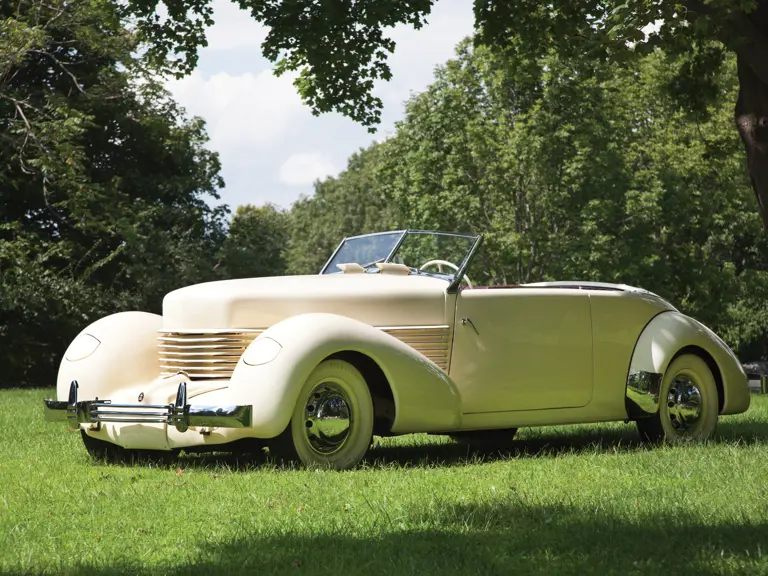
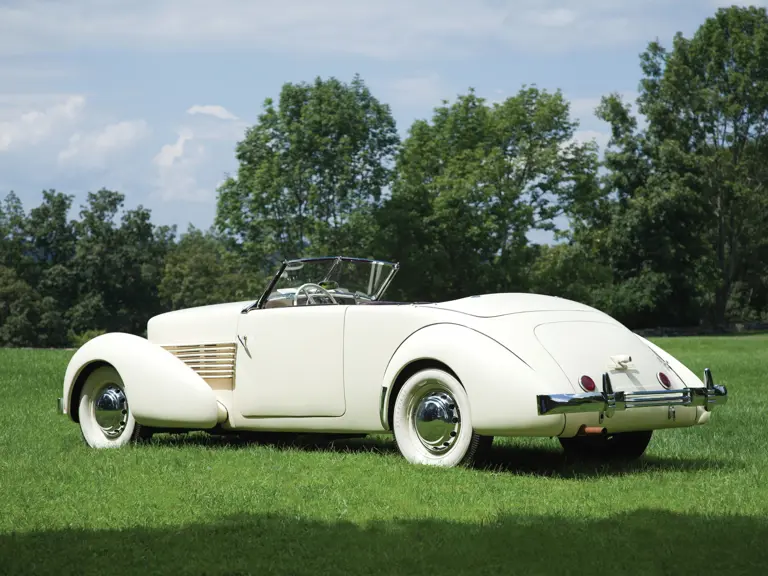
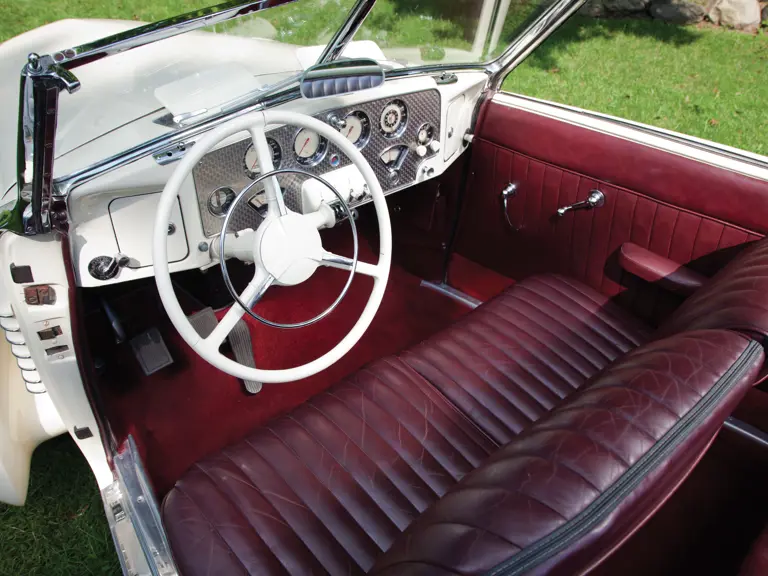
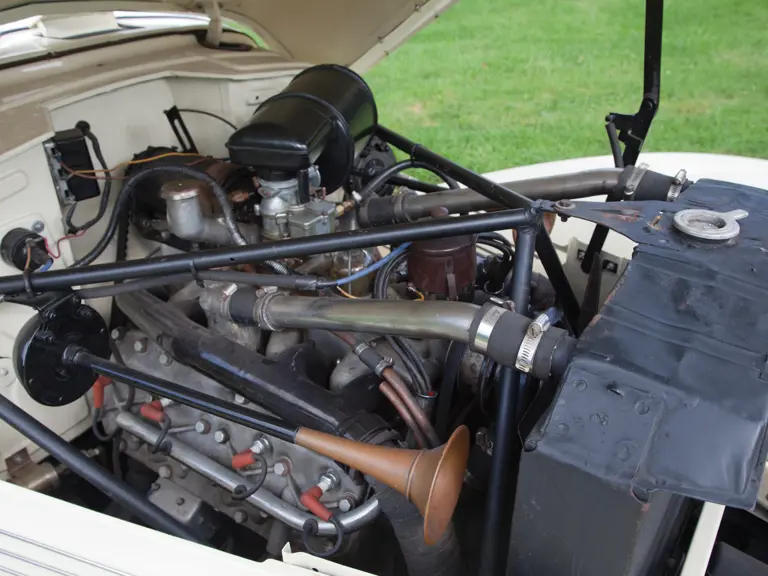
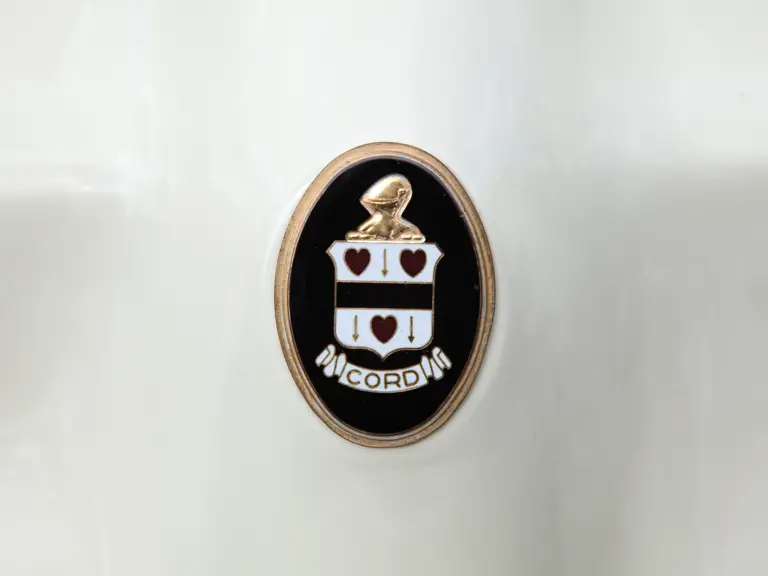
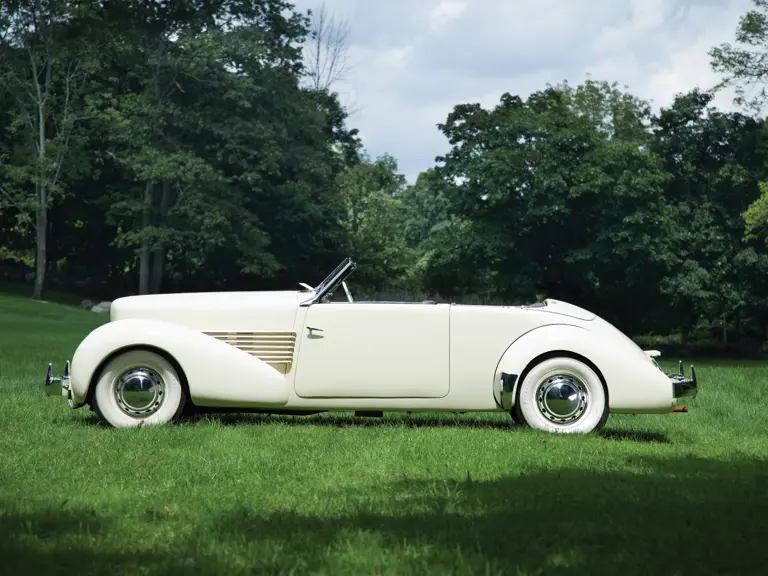
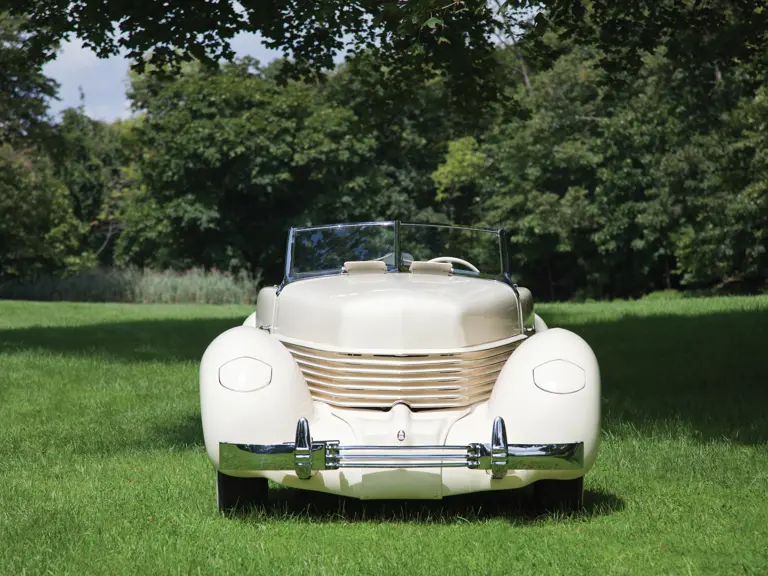
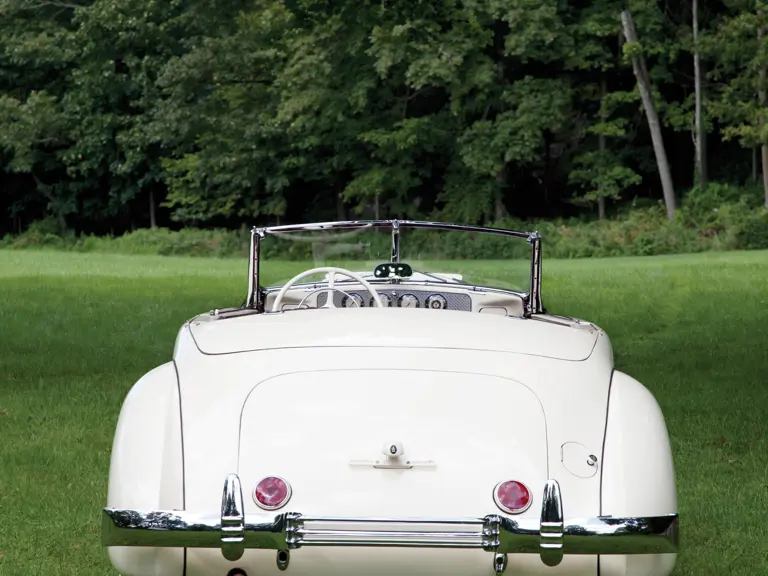
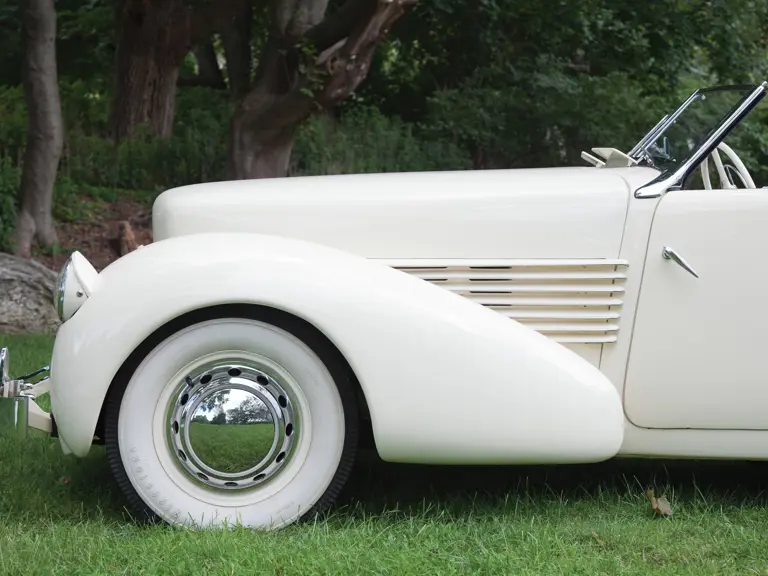
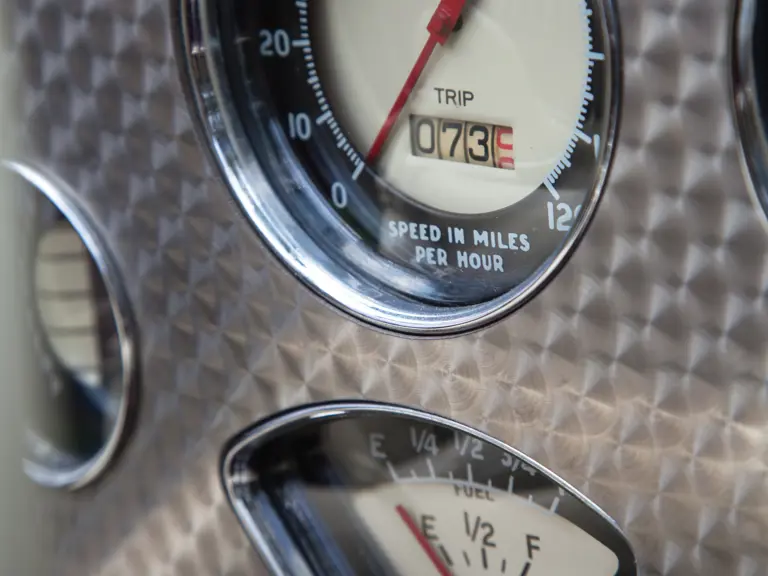
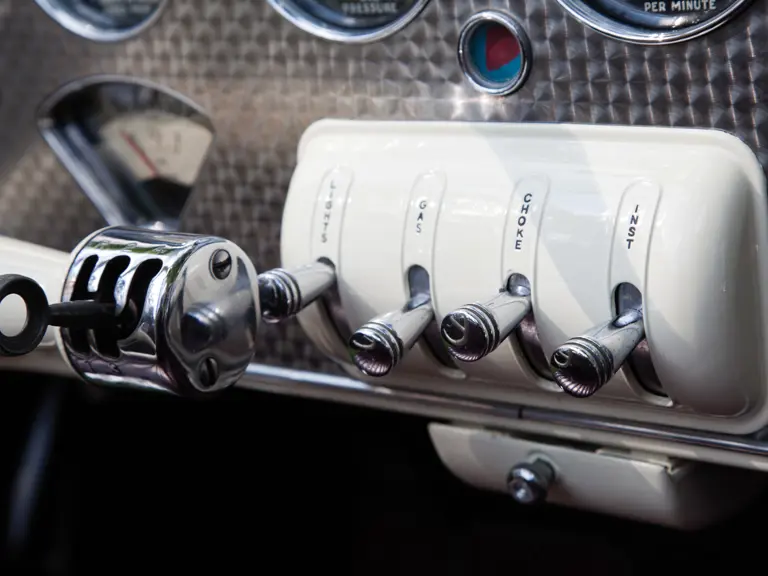

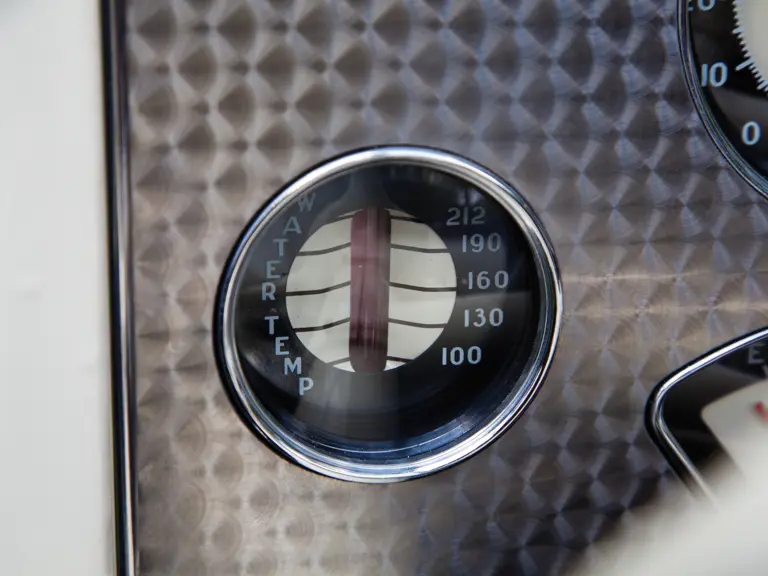
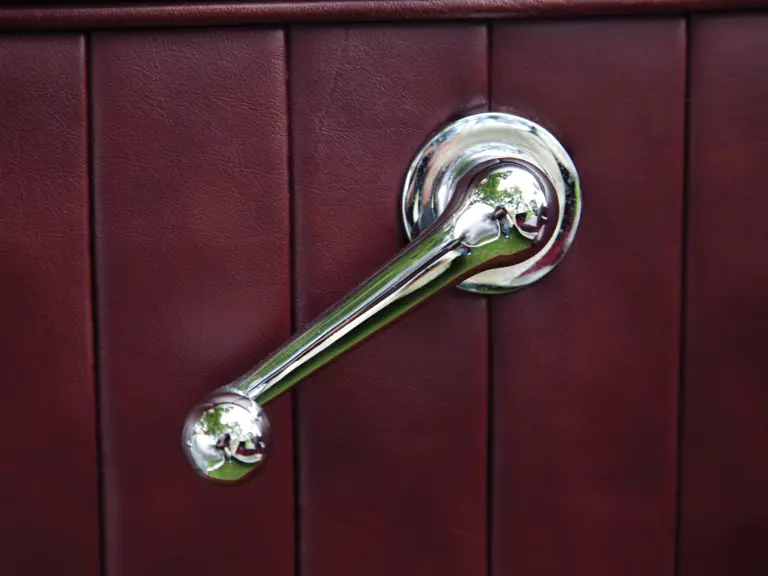
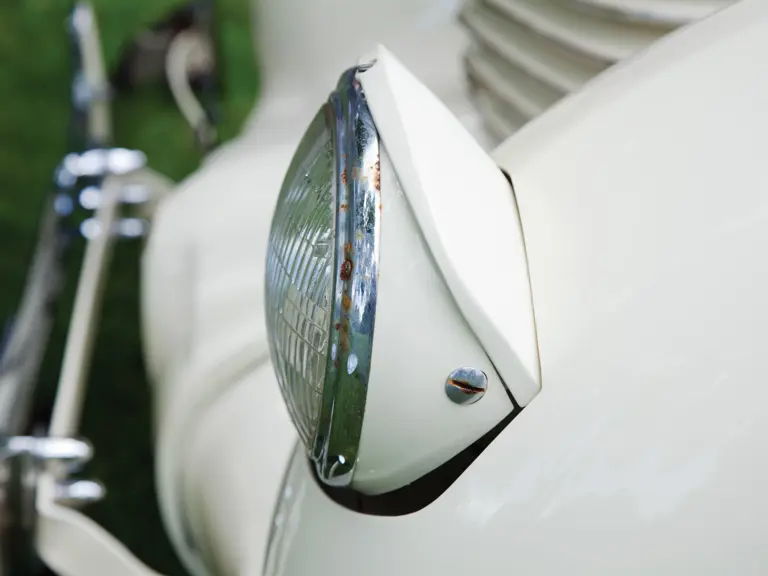
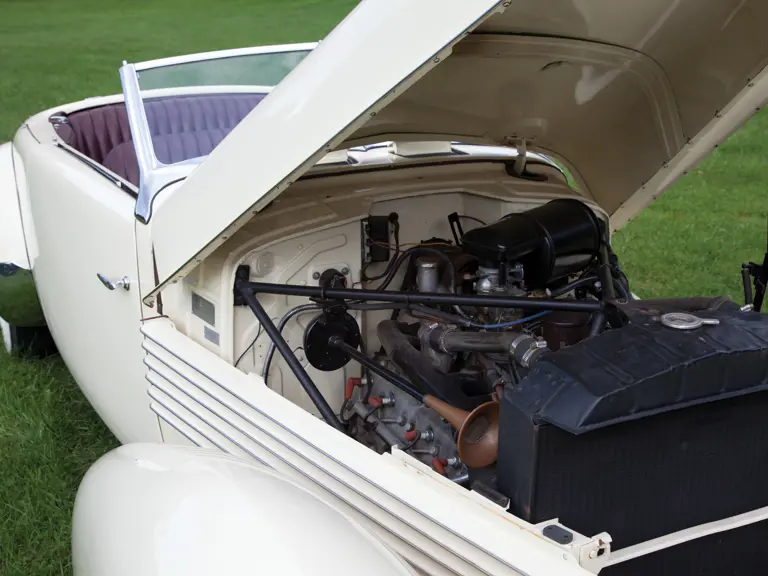
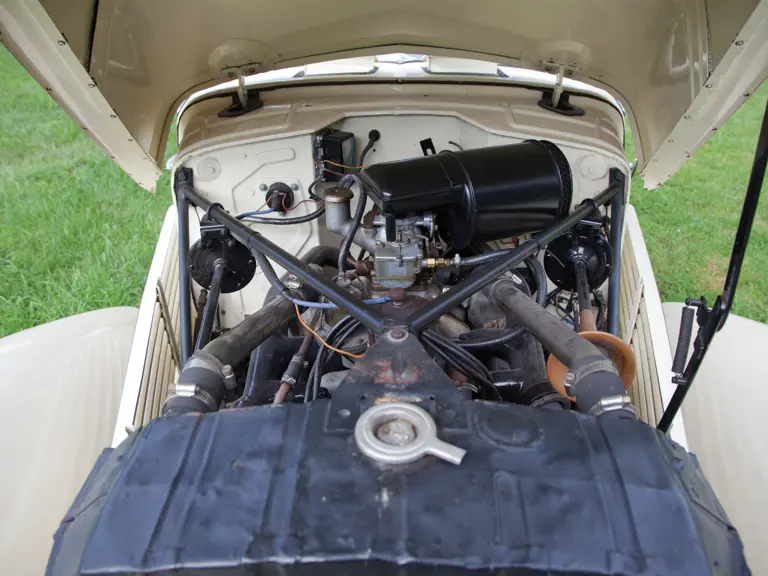
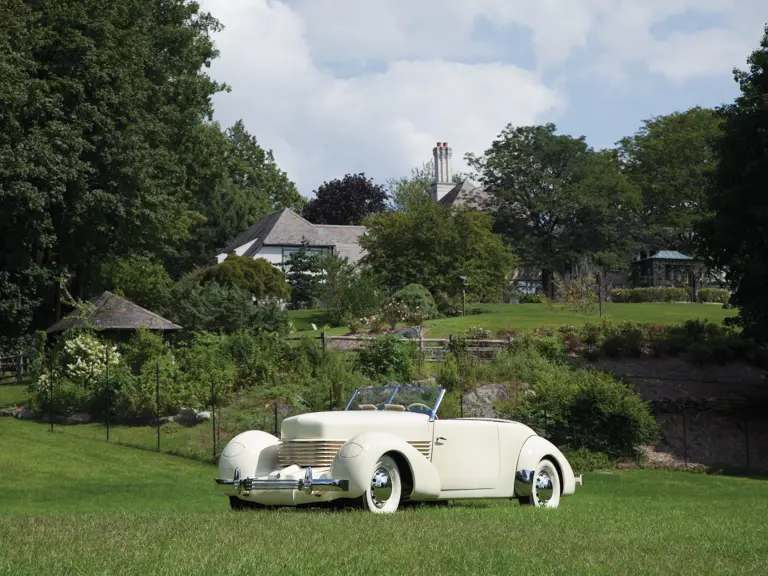
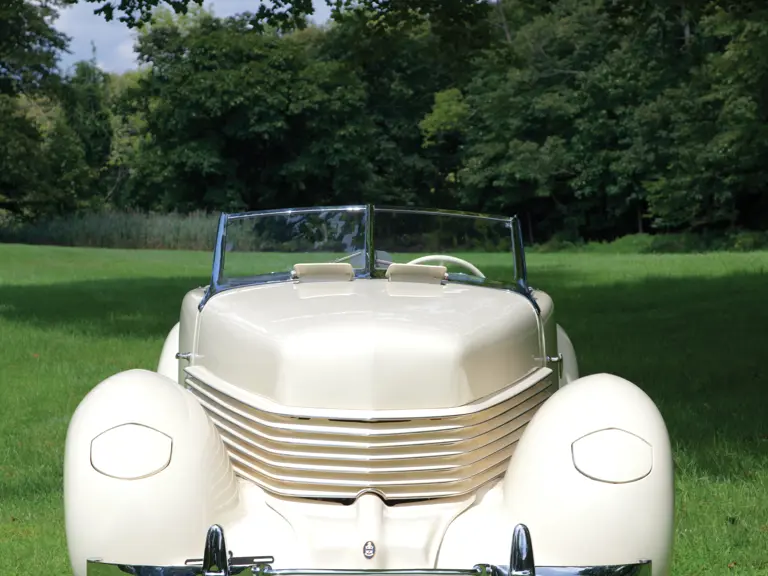
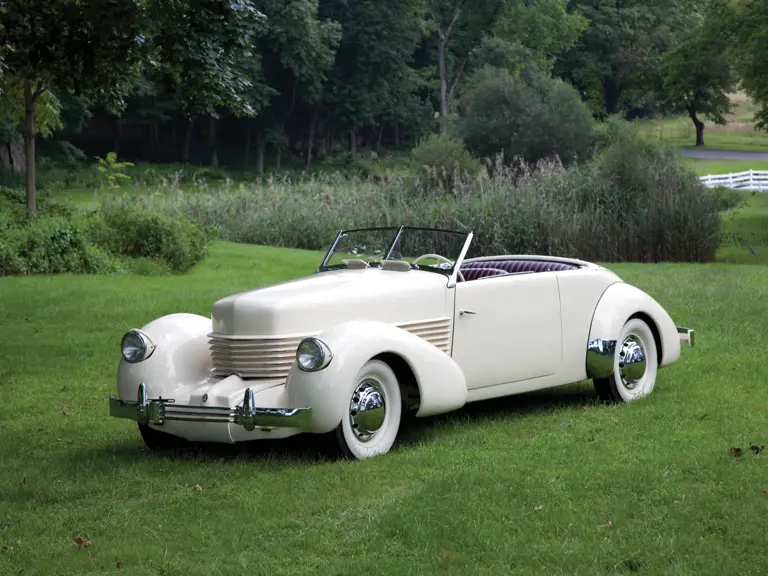
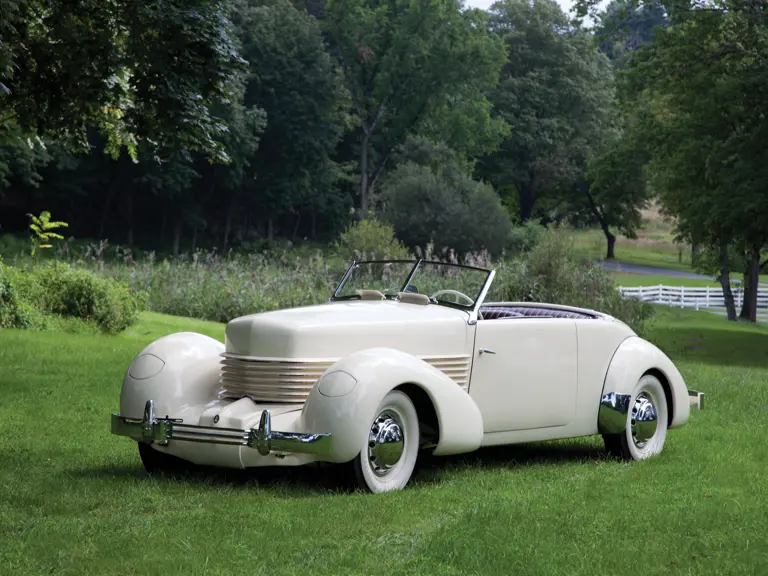
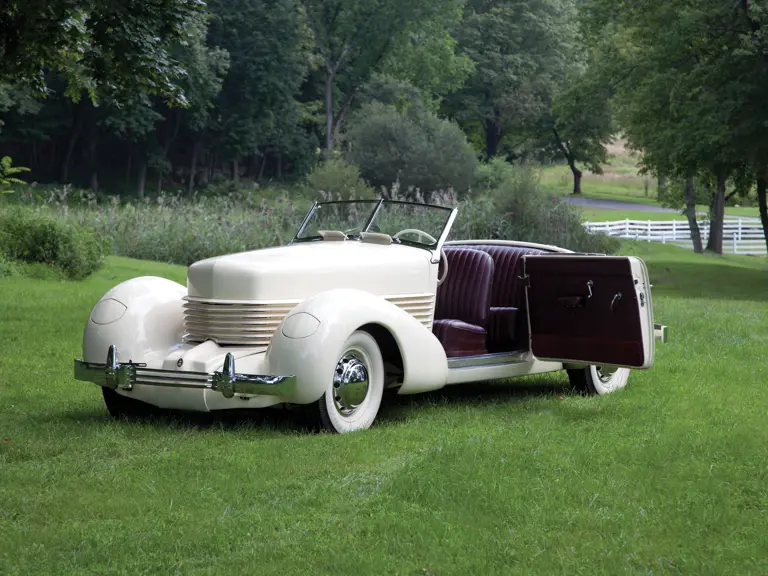

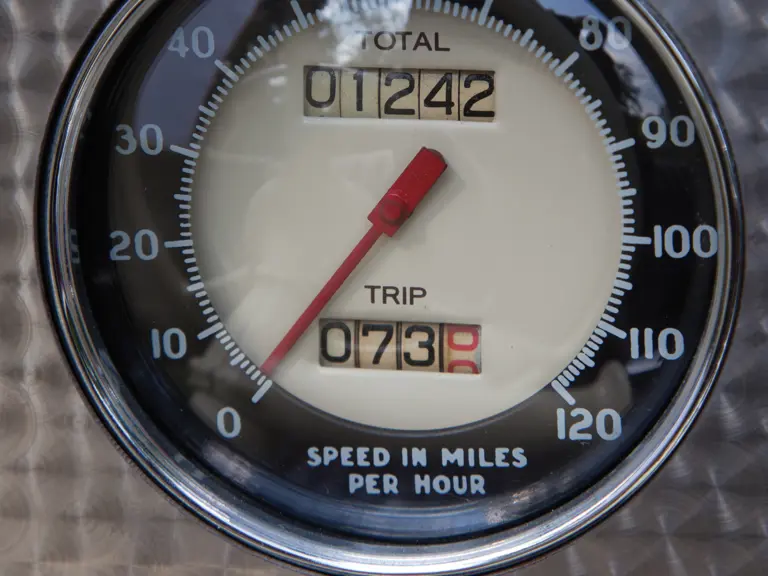
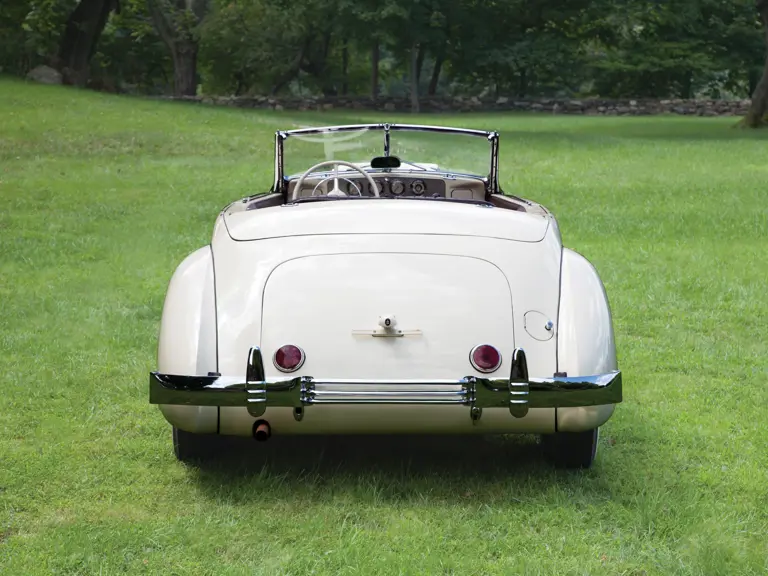
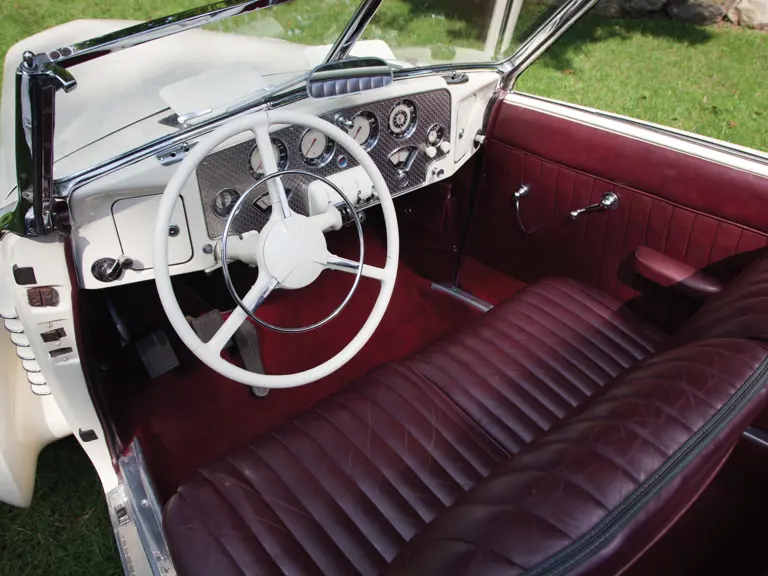

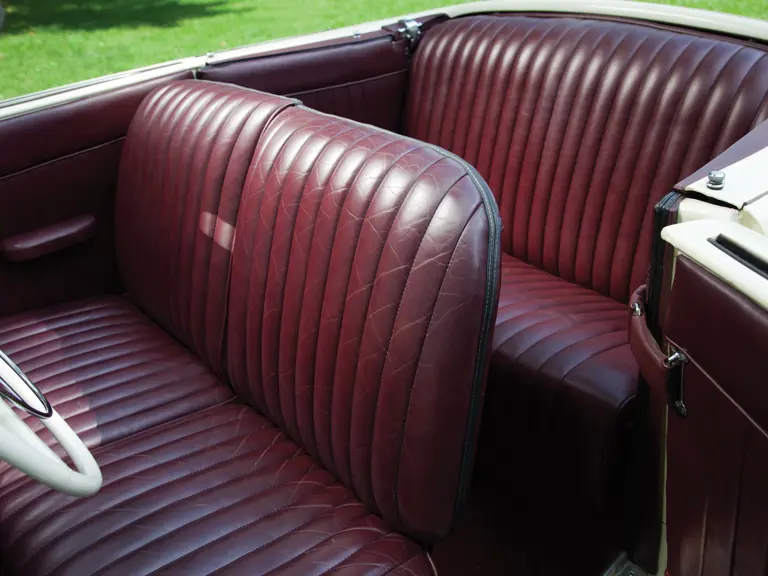
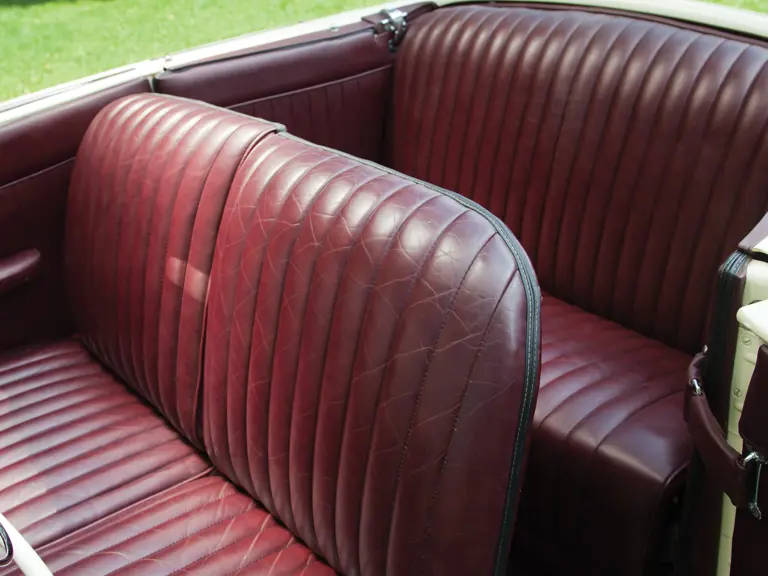
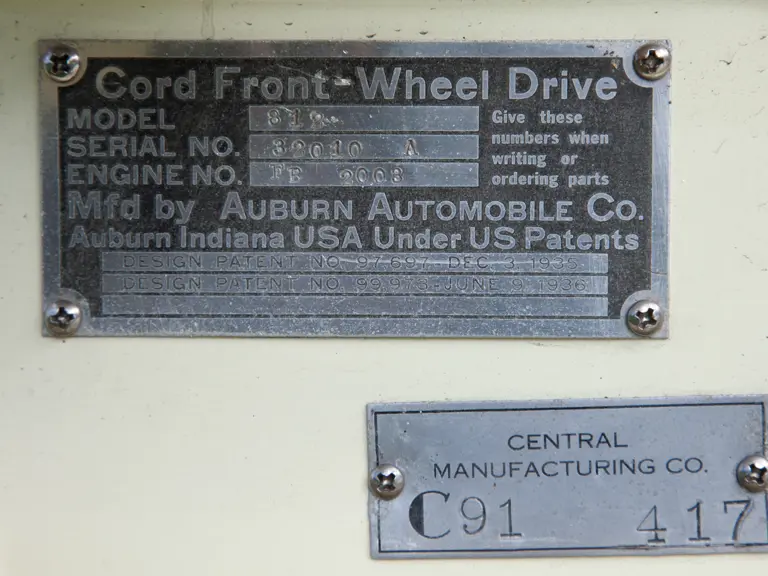
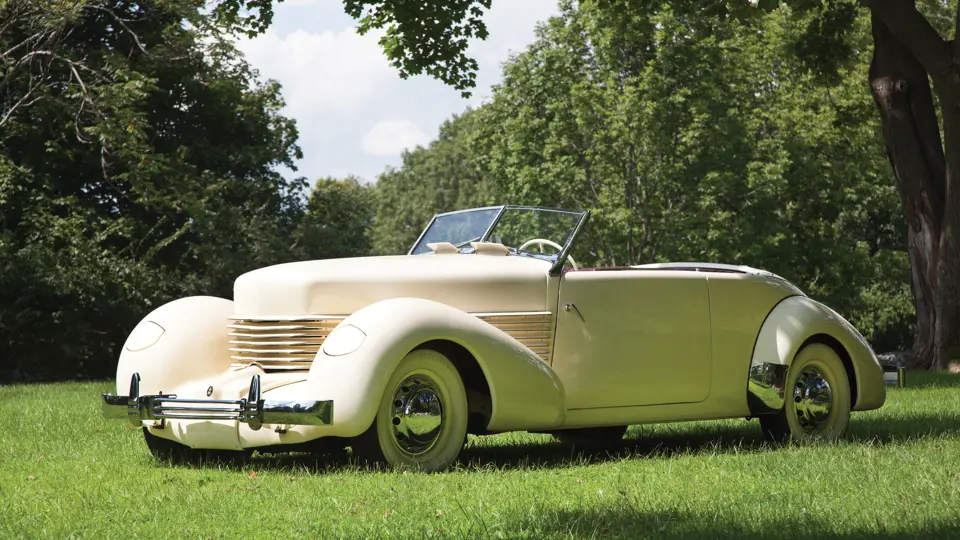
 | Hershey, Pennsylvania
| Hershey, Pennsylvania
